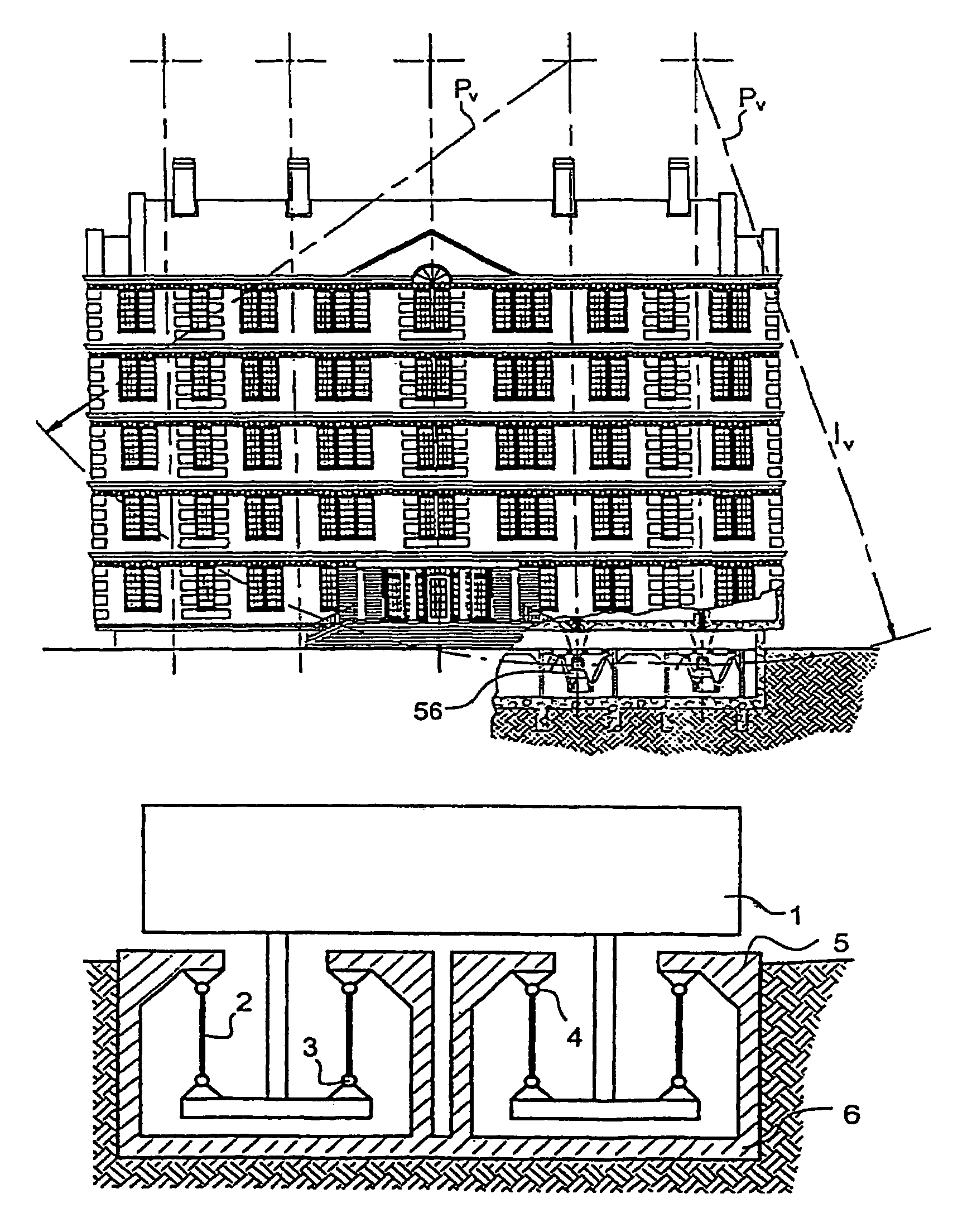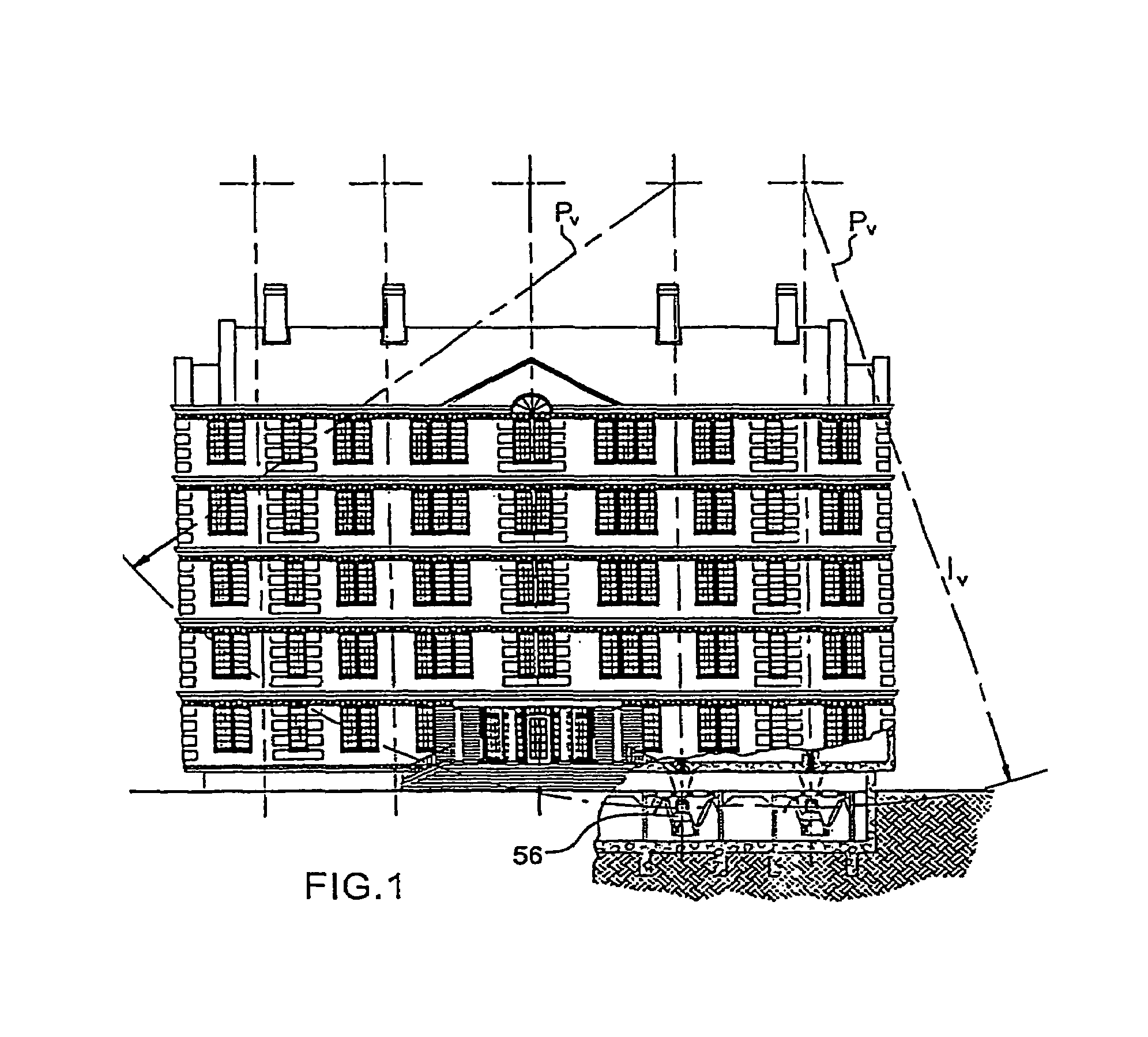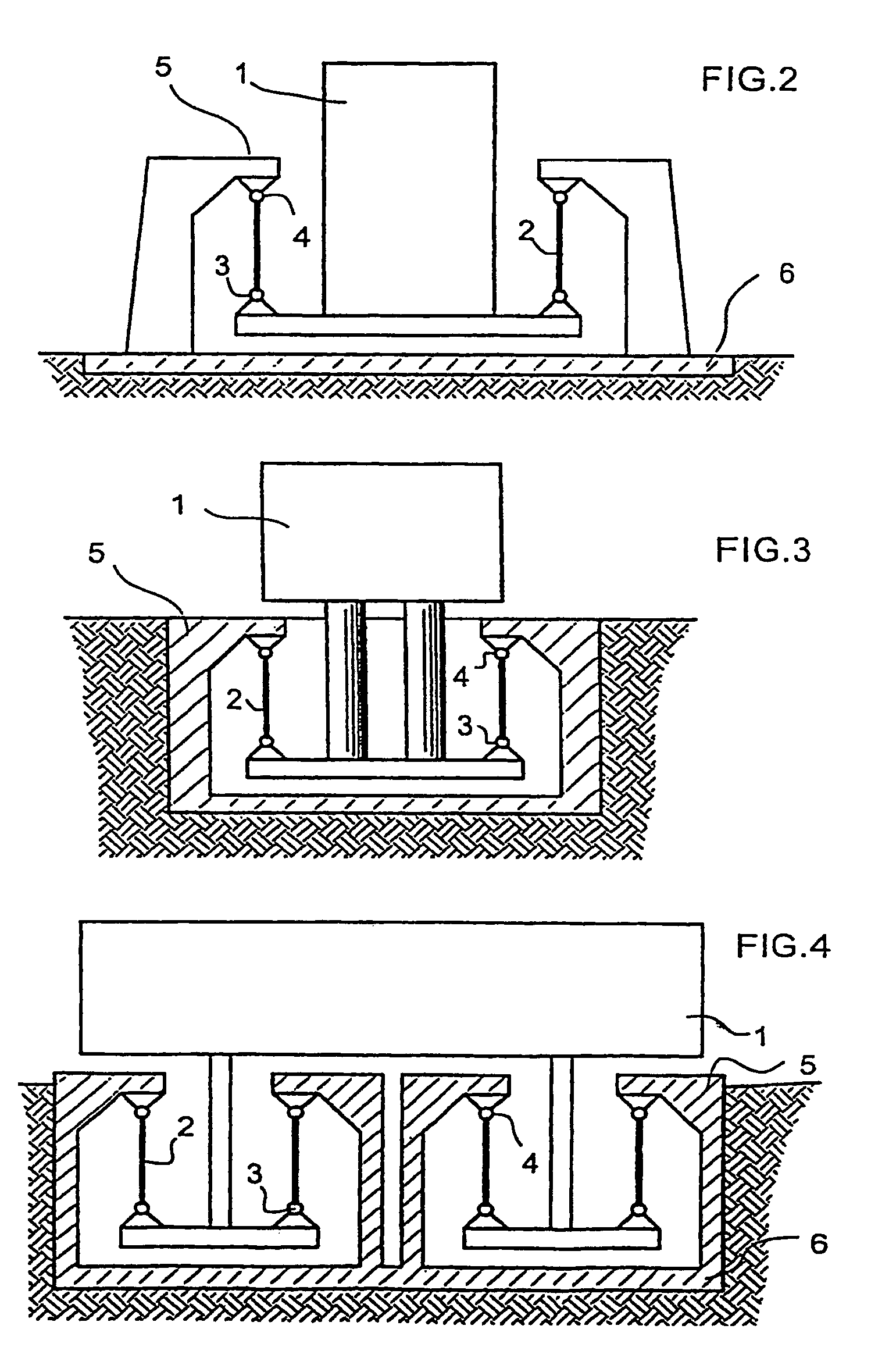It does not allow horizontal displacements through lesser forces caused by wind and storms.
In extremely strong earthquakes, which occur from time to time in certain areas, the protection provided by available isolation systems and conventional
design methods according to building codes is not sufficient.
The destruction can be considerable.
With conventional means such a measure obviously necessitates a considerable effort.
In case an earthquake exceeds the reference values of the
building code, buildings will be damaged or destroyed and people may be injured or killed, as the earthquakes of recent years have shown.
It can therefore be stated, that these methods of computation and
dimensioning are inadequate to provide building and life safety or
damage control in stronger earthquakes.
The assumptions in regards to the performance of the building and its structural parameters have a high degree of uncertainty.
To provide for
structural integrity in an extremely large earthquake is technically not feasible, thus conventionally designed structures would fail in such an event.
The opinion, that the destructive results of the forces of earthquake movements could be eliminated through increasing the strength of a structure or through application of elastic and damping elements, has not proven to be realistic.
Also the idea, that some form of added damping could prevent destruction caused by strong earth movements, seems rather hopeless.
Also it is difficult or even impossible analytically to predetermine, which part of the structure will fail first and initiate a collapse of the structure.
These computation methods to determine the
seismic safety of buildings in earthquake regions only can provide sufficient
structural integrity for regularly or relatively often occuring earthquakes of low or medium size magnitude.
It can be concluded that these methods are not sufficient to design and build earthquake proof buildings.
All building materials, being accelerated beyond a certain value, will reach and exceed the limits of their strength, and therefore experience damage in the form of yielding cracks.
It is therefore impossible to realize complete earthquake safety, if a structure is rigidly connected with the base.
Any structure, which by its foundation is rigidly connected to the base or allows only for little movability, will fail at a certain magnitude of earthquake and its resulting accelerations.
The expectation to reduce the damaging
impact of strong earthquake movements through friction and damping appears to be hopeless in the events of strongest earthquakes.
In really strong earthquakes dampening and friction cannot prevent the destructive
impact of the earthquake.
Recent studies of the U.S.
Geological Survey and the California Institute of Technology (CalTech) express the concern, that also these kinds of buildings could possibly be damaged or even collapse in the case of a really big earthquake, if close enough to the epicenter.
In an earthquake therefore, that exceeds the values that are implied by the building codes, destruction and danger for
human life still occurs.
Therefore these
design methods are not sufficient to build seismically truly safe buildings.
These solutions do not transfer any or only limited vertical tension forces and are therefore not suitable for high rises and towers.
These blocks have vertically a
high load bearing capacity and allow horizontal movement of the upper layer relative to the lower layer of the isolation block, although the movability of the block is of limited extent.
With increasing shift away from its middle resting position a stiffening of the block occurs, because of the increase of the steepness of the block's spring rate, and therefore an increase of the shifting force follows, which impacts the building structure.
In extreme cases it can result in damages to the structure and the interior.
These blocks have the
disadvantage of a limited horizontal displaceability.
If a displacement exceeds the range limit the building would be threatened.
Furthermore these elastomeric blocks can sustain only little vertical tension loads.
If their limit is exceeded, they might tear.
These devices don't transfer any tension loads and are not capable to absorb forces caused by torsion moments of the building.
In the case of support of the building by rolling elements, there are problems concerning the resulting high
Hertz' pressures in the points of contact.
This solution puts high demands on the material and the contact surfaces of the involved parts.
Also is it not possible for this example of a
base isolation system to transfer uplift vertical forces.
Therefore the upper plate is lifted when the supporting elements are caused to move through an earthquake, which results in a movement as if suspended from a
pendulum.
The maximum possible displacements of these solutions may not be sufficient already in medium earthquakes.
The natural oscillations of these solutions are too close to the possible natural earthquake oscillations, that a sufficient discoupling of the oscillations does not occur, but
resonance possibly can occur and tension loads cannot be transferred.
The lengths of these pendulums are limited by practical aspects.
The decoupling of the system's natural oscillation from the natural earthquake oscillation is not sufficient.
This could cause additional problems, which could threaten the building.
If, close to its
resonance frequency, the building experiences also a tilting moment in relation to its
vertical axis, the stories of the building further away from the ground experience an increase of accelerations and resulting loads.
Even with highly elastic bearings between the building and its foundation, and its resulting horizontal flexibility, there won't be truly satisfactory results in the case of really strong shaking, if the discoupling of the frequencies is not sufficient.
Consequently, it is possible, that such base isolated buildings would be forced into increased vibrations by such frequencies.
Structural damage might result to the building, and additionally damage to the interior, caused by movable objects, which could also endanger people.
In a truly large earthquake, a ‘Big One’, protection by the above mentioned systems and all other conventional
design methods according to building codes might be insufficient or might even fail.
Destruction and the number of death victims could be catastrophic.
In a huge earthquake failure is possible.
The earthquake frequencies and the
natural frequency of the Virtual
Pendulum supported structure are so greatly dissonant, that the movement of the ground cannot be transmitted to the supported structure.
On the other hand, elastomeric bearings and friction sliding bearings still transmit considerable shear forces to the
super structure, which could become critical in certain cases.
Even if the building does not sustain any structural damage, the damage to the interior of the building can still be considerable.
Elastomeric bearings and friction sliding bearings have limited stiffness towards vertical tension forces.
If an earthquake produces high vertical accelerations, it might result in damages to the bearing and to the supported structure, or even a separation from its foundation might occur, with serious consequences following.
These problems prohibit the application of these isolators for taller structures.
Maximum possible displacements for known isolators may not be sufficient in great earthquakes.
If these displacement limits are exceeded the building can be damaged or destroyed.
It is no method and system known that makes a comparable behavior possible.
 Login to View More
Login to View More  Login to View More
Login to View More 


